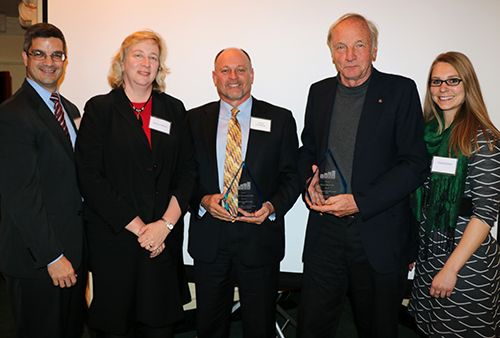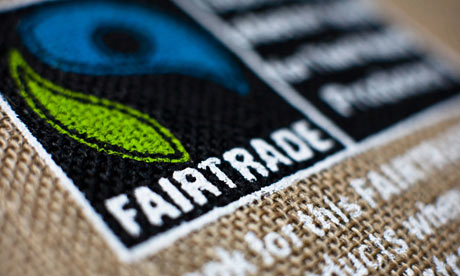
This year marks the 30th anniversary of the U.S. Agency for International Development (USAID) Farmer-to-Farmer (F2F) program. Authorized under the 1985 Farm Bill, the program recruits U.S. farmers and agribusiness professionals to provide technical assistance to farmers in developing countries. Last week, USAID and Volunteers for Economic Growth Alliance (VEGA) hosted events to highlight the remarkable impact of the program and honor the volunteers who drive its success.
Central to the discussion was the critical role that cooperatives and cooperative members have played over the years in achieving the program’s objectives of promoting sustainable economic growth, improving food security and fostering public diplomacy. Over the past 30 years, F2F volunteers have completed more than 16,000 assignments in over 110 countries and have helped more than 1.3 million farm families with capacity building, technology transfer and natural resources management. Many of those volunteers belong to cooperatives in the U.S. and have shared their expertise in cooperative development with the farmers they train during their assignments. In fact, many of the host organizations that volunteers work with are cooperatives.
During USAID’s volunteer panel discussion, panelist Brian Foster, an agronomist and agribusiness specialist from Minnesota, explained how the women’s soy cooperative in northern Ghana that he worked with has greatly increased members’ incomes by bulking their product to become more competitive on the market. By aggregating their resources through the cooperative, they’ve been able to purchase the inputs they need, like improved seed and fertilizer, at a much better price. Foster provided several examples of how cooperative development, including co-op policy development, has been a key component in many F2F assignments over the past 30 years.
“The co-op model fits all over the world,” Foster said. “It’s a business model that works very well.”
Judy Moses, a sheep and goat producer and member of the Browse & Grass Growers Cooperative in Wisconsin, focused her F2F volunteer testimony on her experience as a cooperative member and, most recently, as a F2F project implementer. Since 2010, Moses has completed six volunteer assignments supporting farmer cooperatives in Mali and Guinea, and she realized through these experiences that cooperative members in the U.S. and in Africa share many of the same livestock-rearing challenges. The opportunity to learn from each other was so great that Browse and Grass Growers Cooperative recently applied for F2F funding and now manages a F2F project in Mali through a VEGA small grant award—a true example of Cooperative Principle 6 (cooperation among cooperatives) in action.
As part of the F2F 30th anniversary celebration, VEGA also hosted a panel discussion on volunteer impacts. NCBA CLUSA Senior Program Manager Jane Podolsky spoke about the unique technical assistance the F2F program offers. F2F is not a “voluntourism” program, Podolsky said, but one that focuses on careful volunteer recruitment and screening to make sure the volunteers possess the technical expertise that the host organizations request, whether it be in institutional capacity-building and cooperative development, conservation farming techniques that increase quality and quantity of crop yields, or very specific value chain interventions like aflatoxin management in peanuts to reduce contamination.
The day’s anniversary celebrations ended with VEGA presenting its F2F volunteer of the year awards. Two of NCBA CLUSA’s volunteers were among the awardees. Jock Brandis and Randy Shackelford, who traveled to Zambia in September to work with smallholder farmers on aflatoxin reduction in peanuts, were acknowledged for their tremendous impacts in technology transfer.
Funding for the F2F program recently increased by 50 percent in the reauthorization of the Farm Bill, a testament to the program’s impact. Former Congressman and President Emeritus of The Asia Foundation Douglas Bereuter, who championed the development of the F2F program, said it is the “best bang for its buck” among U.S. foreign assistance programs because of its low costs and quality volunteers. As USAID Deputy Assistant Administrator for the Bureau of Food Security Dr. Saharah Moon Chapotin added, the F2F program “puts a face to American foreign assistance.” F2F volunteers are true ambassadors of American generosity and goodwill, and as the last 30 years have demonstrated, are also ambassadors of the cooperative business model.
NCBA CLUSA has implemented F2F projects since 2010 and currently manages projects in Senegal and Zambia. For more information on F2F and to view open volunteer positions, click here.


